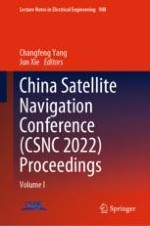2022 | OriginalPaper | Chapter
Research on Monitoring Strategy of Loess Landslide with GNSS Meteorology
Authors : Jianwen Jiang, Shuangcheng Zhang, Cunpeng Jia, Xuqiao Wang, Xinrui Li
Published in: China Satellite Navigation Conference (CSNC 2022) Proceedings
Publisher: Springer Nature Singapore
Activate our intelligent search to find suitable subject content or patents.
Select sections of text to find matching patents with Artificial Intelligence. powered by
Select sections of text to find additional relevant content using AI-assisted search. powered by
